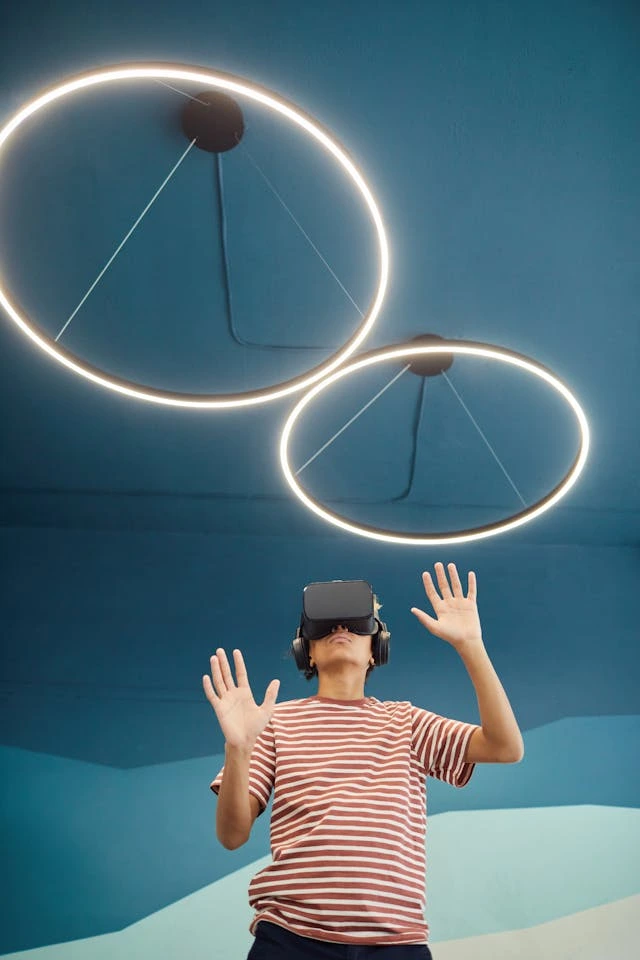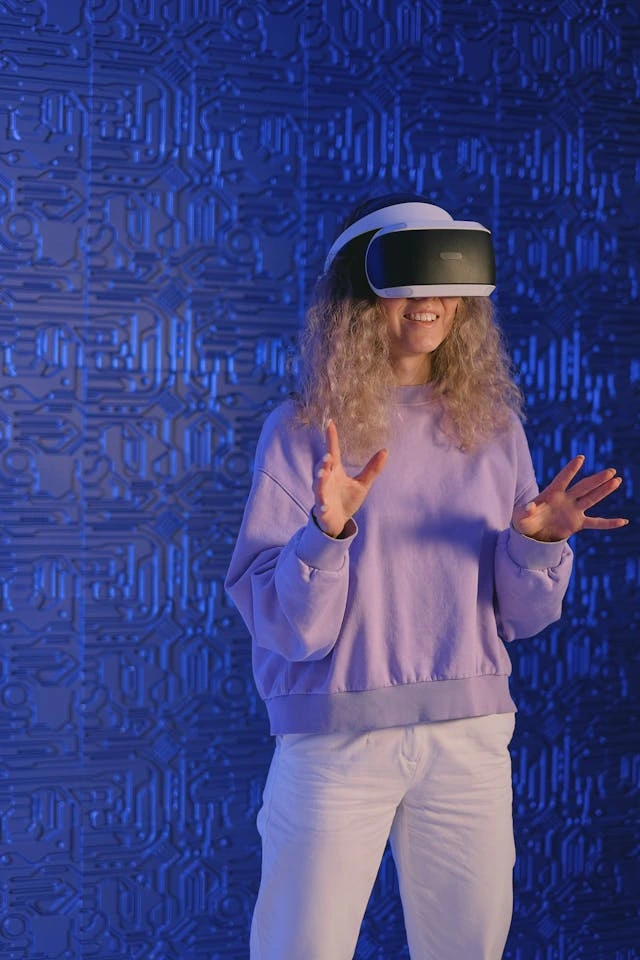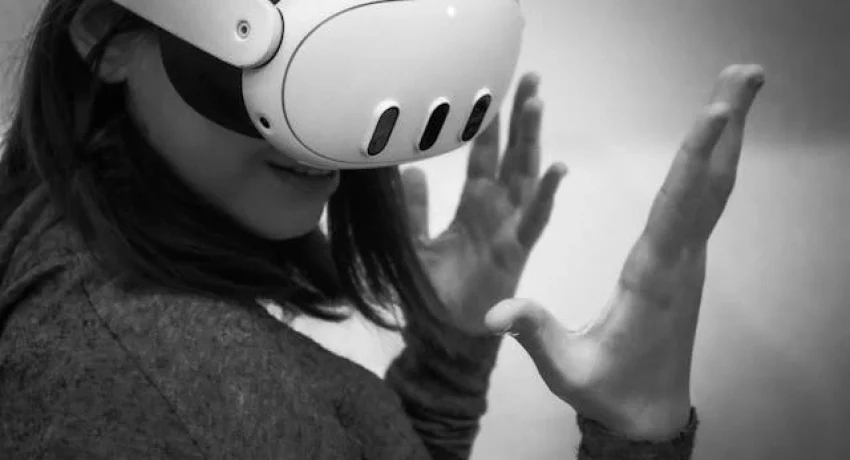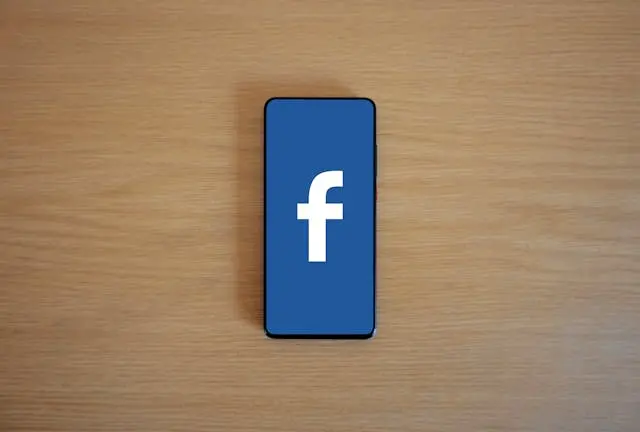EXTENDED REALITY (XR)

The rapid advancement of technology in recent years has led to the development of Extended Reality (XR), a broad term that encompasses Virtual Reality (VR), Augmented Reality (AR), and Mixed Reality (MR). XR technologies are set to transform a wide range of industries, including entertainment, education, healthcare, and remote work. These technologies are reshaping the way we interact with the digital world, offering immersive experiences that blur the lines between the physical and virtual worlds.
EXTENDED REALITY (XR): THE FUTURE OF ENTERTAINMENT, EDUCATION, HEALTHCARE, AND REMOTE WORK
In this article, we will explore how XR is revolutionizing key industries and the potential implications of these technologies for the future. We will discuss how VR, AR, and MR are being applied in entertainment, education, healthcare, and remote work, and examine the opportunities and challenges that lie ahead.
Understanding Extended Reality (XR)
Before delving into specific applications, it is important to define Extended Reality (XR) and its constituent technologies:
- Virtual Reality (VR): VR is a fully immersive experience that takes users into a computer-generated, three-dimensional environment. Users typically wear a VR headset that tracks their movements and provides a 360-degree field of view. VR is used in gaming, simulations, and training, providing users with an experience that can mimic real-world interactions or transport them to entirely new environments.
- Augmented Reality (AR): AR overlays digital content on top of the real world, enhancing the user’s perception of their surroundings. Unlike VR, AR does not immerse users in a virtual environment but instead augments the real world with information, images, or sounds. Popular examples of AR include smartphone apps like Pokémon GO or the use of AR for navigation in certain apps and devices.
- Mixed Reality (MR): MR combines elements of both VR and AR, allowing digital objects to interact with the real world in real time. Users can see and interact with both physical and virtual objects in their environment, creating more seamless and realistic experiences. MR often requires more advanced hardware, such as specialized headsets like the Microsoft HoloLens or Magic Leap.
Together, VR, AR, and MR make up the broader category of XR. Each of these technologies offers unique experiences and can be used for different purposes, depending on the level of immersion and interaction required.
Entertainment: The Transformation of Gaming and Interactive Experiences
One of the most well-known applications of XR technologies is in the field of entertainment, particularly in gaming. As XR technology continues to evolve, it is changing how we experience video games, movies, and other forms of media.
1. Gaming
XR has already had a profound impact on the gaming industry, especially through VR gaming. VR headsets such as the Oculus Rift, HTC Vive, and PlayStation VR have revolutionized gaming by offering fully immersive environments where players can physically interact with virtual worlds.
- Immersion: VR provides a level of immersion that traditional gaming consoles cannot replicate. Players can step into a game and explore virtual environments in 360 degrees, enhancing their sense of presence and interaction. This level of immersion can be especially captivating in genres such as first-person shooters, adventure games, and simulation games.
- Movement and Interaction: With the addition of motion controllers and haptic feedback, VR gaming allows players to physically move, touch, and interact with their surroundings in a way that traditional gaming never could. For example, in VR, players can wield weapons, grab objects, and navigate virtual spaces using their own hand movements, creating a more intuitive and engaging experience.
- Social Gaming: VR also facilitates social interaction in virtual environments. Multiplayer VR games enable players to interact with others in real time, offering new opportunities for collaboration and competition. Platforms like Rec Room and VRChat allow players to meet, socialize, and play together in a shared virtual space.
2. Movies and Interactive Media
XR is not limited to gaming. The movie and entertainment industries are also exploring how VR and AR can offer new storytelling experiences.
- VR Movies: VR movies take the concept of traditional film and turn it into an immersive experience where viewers can explore the environment around them. Instead of passively watching a screen, viewers in a VR movie can look around and interact with the environment, making the storytelling experience more interactive and engaging.
- AR in Entertainment: Augmented reality has found applications in live events, theme parks, and mobile apps. For example, AR technology can be used to enhance the experience of live performances, adding visual effects to concerts or theater performances. AR has also been used in exhibitions, such as museums, to provide additional information or create interactive exhibits.
Education: Enhancing Learning Experiences
The education sector stands to benefit immensely from the advancements in XR technology. XR technologies—particularly VR and AR—are transforming how students learn and interact with educational content, making education more engaging, interactive, and accessible.
1. VR in Education
Virtual Reality offers immersive learning environments where students can engage with subject matter in ways that traditional classrooms cannot replicate.
- Experiential Learning: VR allows students to experience history, science, and other subjects firsthand. For example, students can take virtual field trips to ancient historical sites, explore the solar system, or interact with 3D models of molecules. This immersive learning helps students better understand complex concepts by allowing them to experience them in a more hands-on way.
- Simulations and Training: VR is being used in medical, engineering, and other specialized fields to provide simulations for training. Medical students can perform virtual surgeries, while pilots can practice flying in a flight simulator. These simulations provide valuable hands-on experience without the risk associated with real-world training.
- Special Education: VR also offers unique opportunities in special education. For students with autism, VR can create safe and controlled environments where they can practice social interactions and develop life skills. Additionally, VR can be used for students with physical disabilities to explore virtual worlds and access experiences they may not have in the physical world.
2. AR in Education
Augmented Reality also plays an important role in education by providing an interactive and engaging way to learn.
- Interactive Textbooks and Learning Materials: With AR, students can use their smartphones or AR glasses to view interactive textbooks that bring static images to life. For example, a biology textbook might use AR to display 3D models of the human body that students can explore by pointing their device at the page.
- Enhanced Collaboration: AR enables students to collaborate in real time, using digital overlays to share ideas, data, and information in a way that enhances teamwork. For example, students working on a project can use AR to view and manipulate virtual objects, such as models of historical landmarks or scientific phenomena.
- Remote Learning: AR has the potential to enhance remote learning by providing students with access to interactive content that can be accessed from anywhere. Whether it’s participating in a virtual lab experiment or touring a museum, AR can make learning more dynamic and accessible.
Healthcare: Revolutionizing Diagnosis, Treatment, and Patient Care
The healthcare industry is another area where XR technologies are poised to have a significant impact. From VR and AR being used in medical training and surgery to MR applications for patient care and rehabilitation, XR technologies are transforming healthcare delivery.
1. Medical Training and Education
Medical students and professionals are using VR simulations to gain hands-on experience in a controlled and risk-free environment. VR training allows medical students to practice surgeries, diagnose diseases, and study human anatomy without the need for real patients.
- Surgical Training: Surgeons can practice procedures in a virtual environment, honing their skills before performing them on real patients. This is particularly useful for complex or high-risk surgeries where practicing in a real-world setting might be dangerous or impractical.
- Anatomy and Medical Visualization: VR can be used to visualize the human body in 3D, allowing students to explore anatomy in greater detail. Additionally, medical professionals can use VR to study specific organs or diseases, improving their understanding of complex medical conditions.
2. Treatment and Rehabilitation
XR technologies are also being used in the treatment and rehabilitation of patients. For example, VR is used in pain management, where immersive virtual environments help distract patients from pain during medical procedures. MR is also being used for physical rehabilitation, allowing patients to perform exercises in a virtual environment that adapts to their progress.
- Physical Rehabilitation: MR can create personalized rehabilitation programs where patients perform exercises in a virtual environment that responds to their movements. This makes therapy more engaging and can help improve patient outcomes by encouraging patients to participate actively in their recovery process.
- Mental Health Treatment: VR is being used for exposure therapy to help treat anxiety, PTSD, and phobias. Patients can confront their fears in a controlled virtual environment, allowing therapists to guide them through the process of overcoming their anxiety.

Remote Work: The Future of Collaboration
The COVID-19 pandemic accelerated the shift to remote work, and XR technologies are expected to play a critical role in the future of virtual collaboration.
1. Virtual Offices and Collaboration
With VR and MR, employees can collaborate in virtual office spaces, where they can hold meetings, brainstorm, and interact with colleagues as if they were in the same room.
- Virtual Workspaces: In a virtual office, employees can interact with 3D representations of their colleagues, participate in meetings, and collaborate on projects in real time. VR allows for more natural interactions than traditional video conferencing tools, making remote work feel more like an in-person experience.
- MR for Remote Collaboration: MR can bring physical objects into virtual spaces, allowing remote workers to manipulate 3D models or share virtual whiteboards. This makes collaboration across distances more interactive and productive.
2. Training and Onboarding
XR technologies can also be used for remote training and onboarding. New employees can be trained in a virtual









